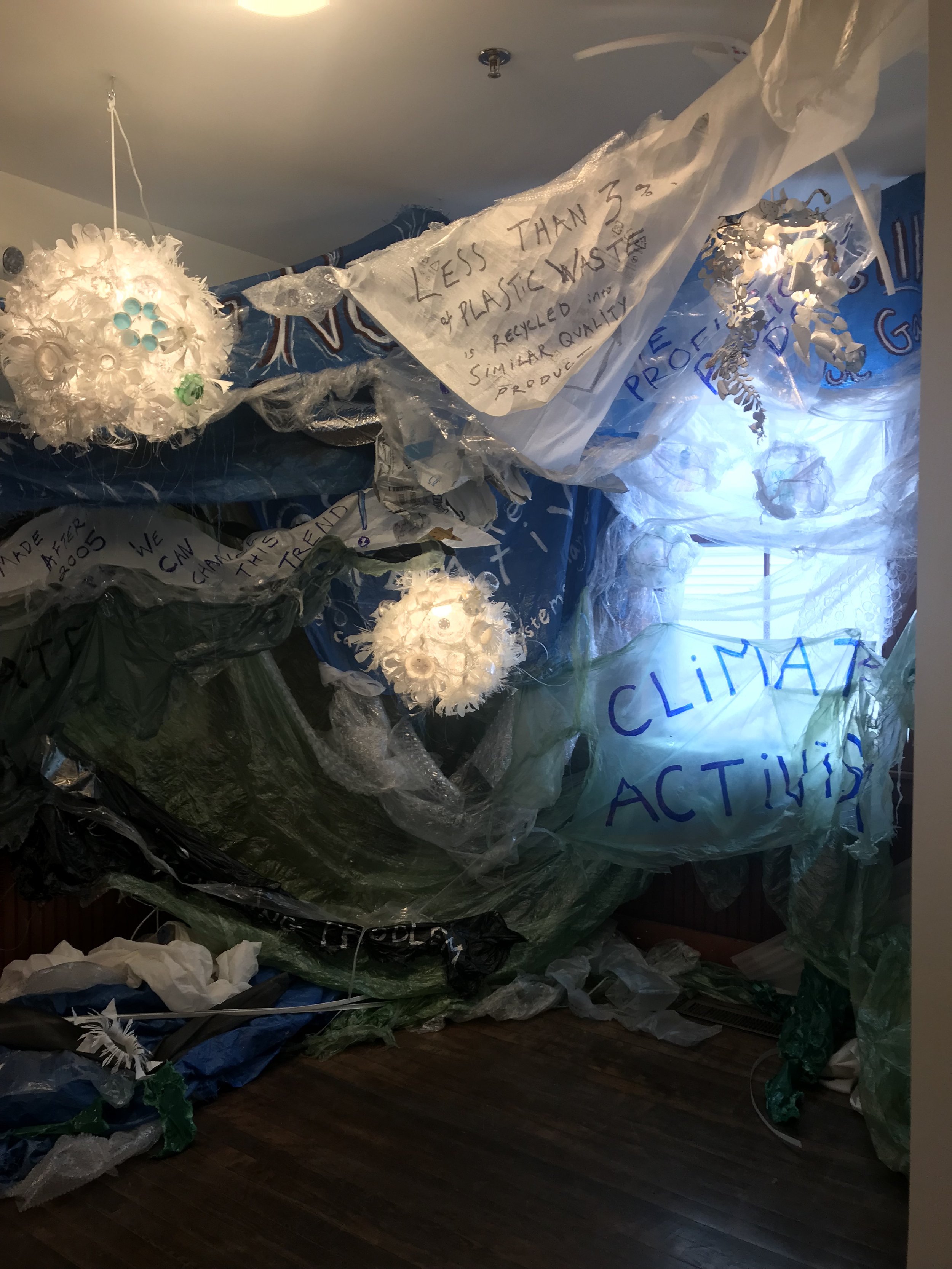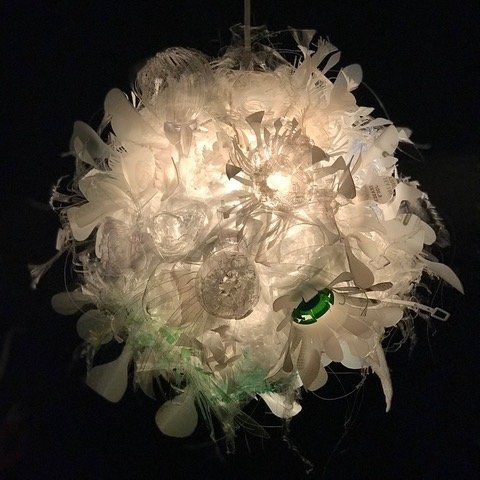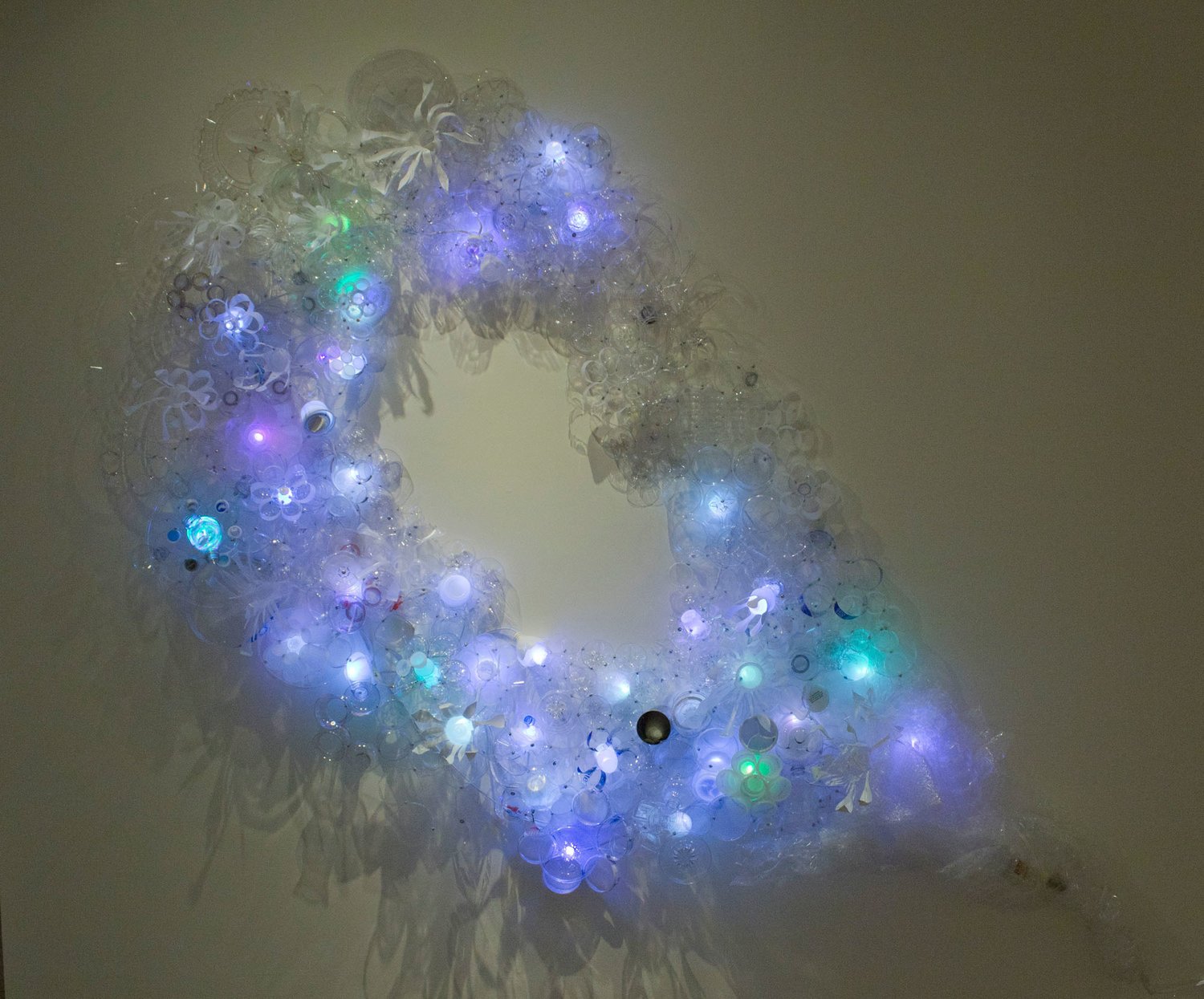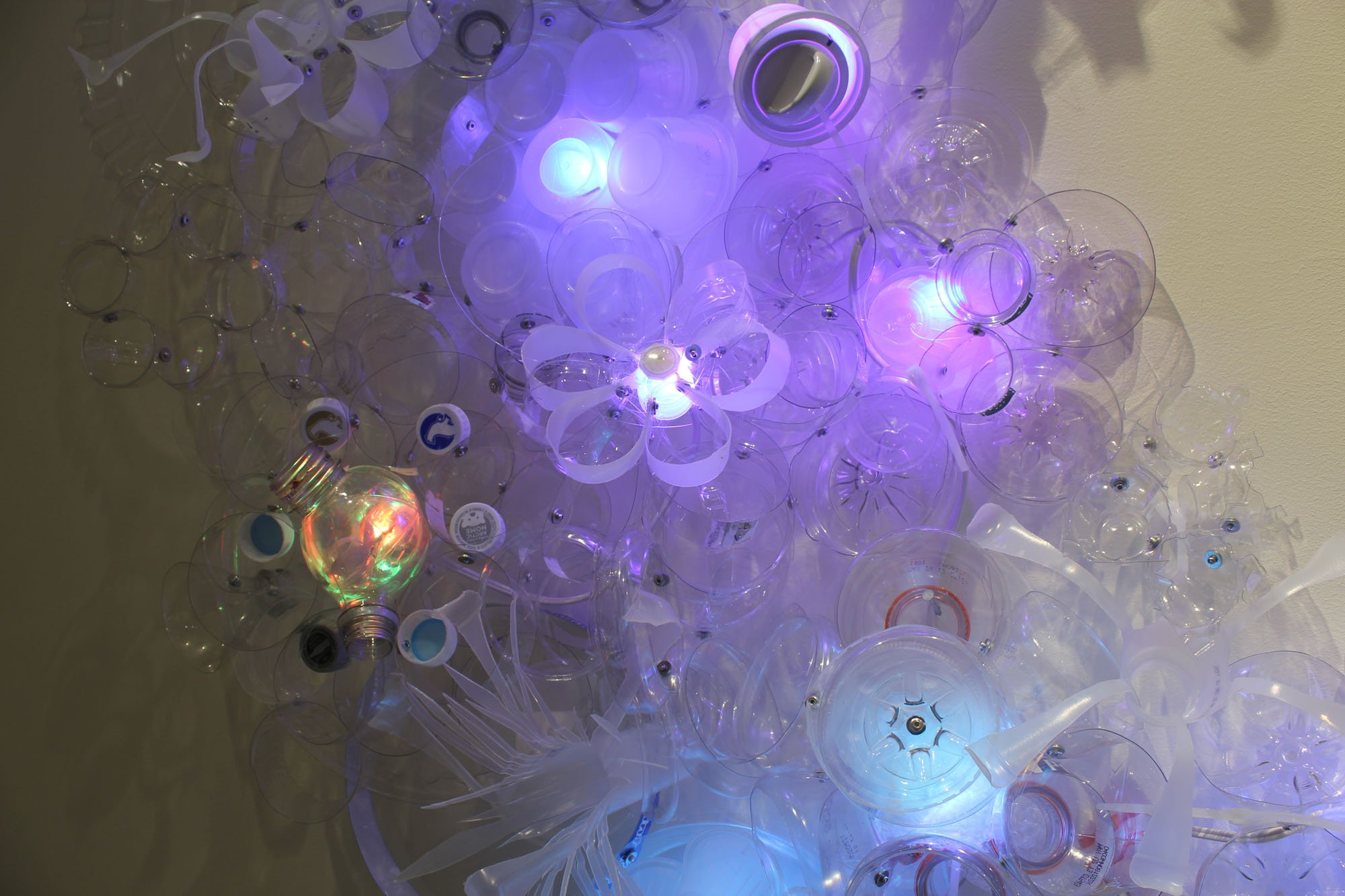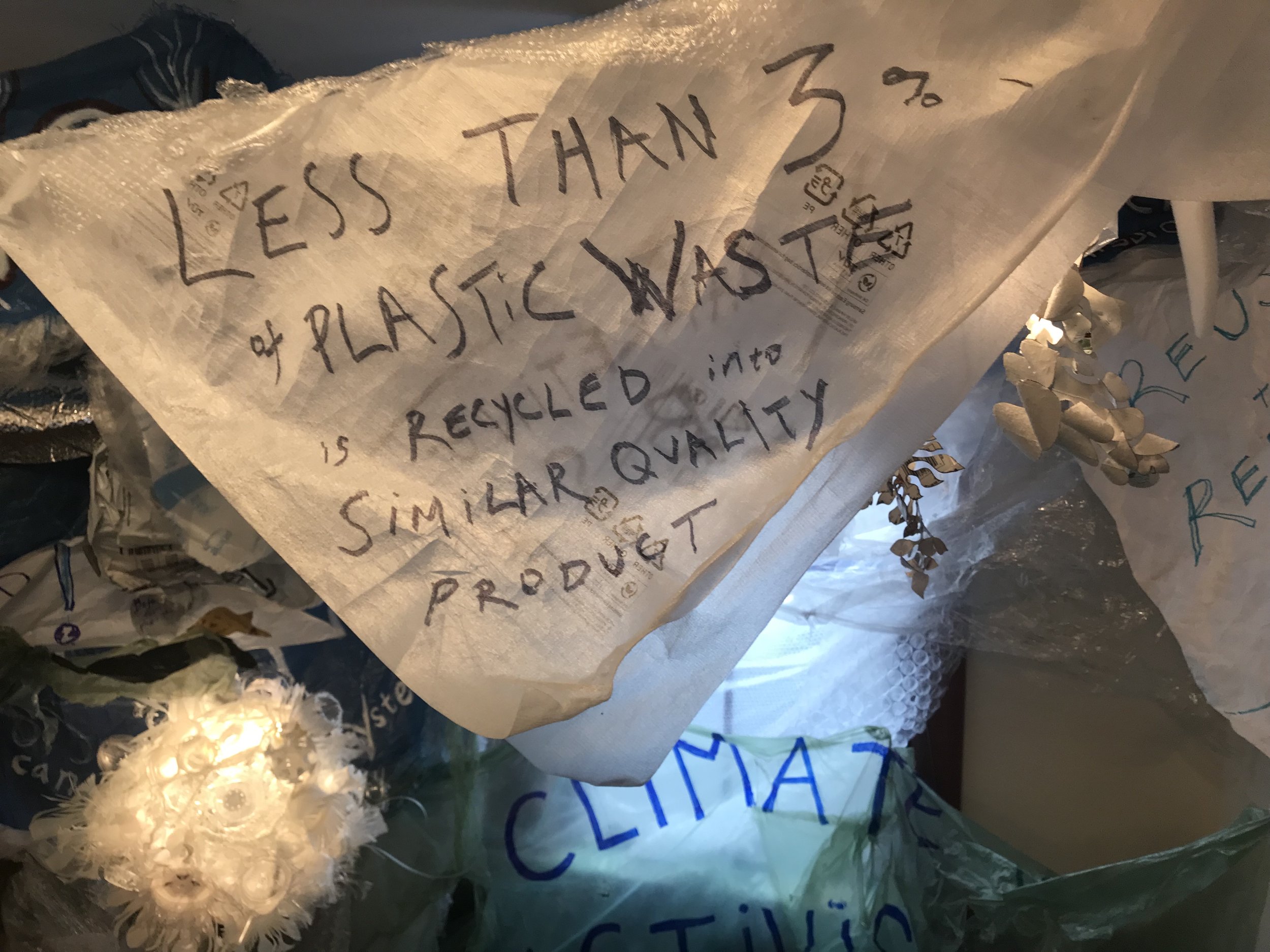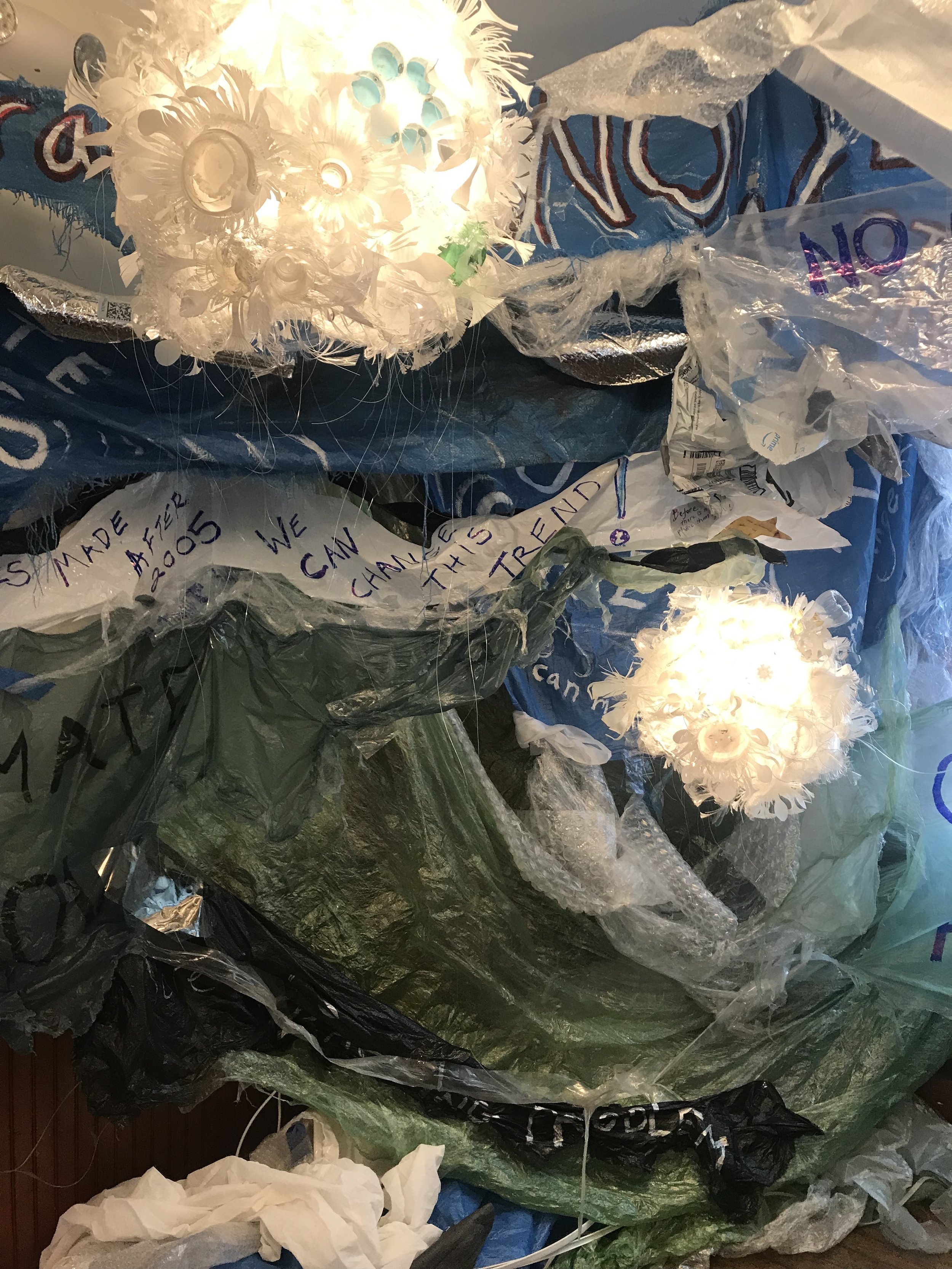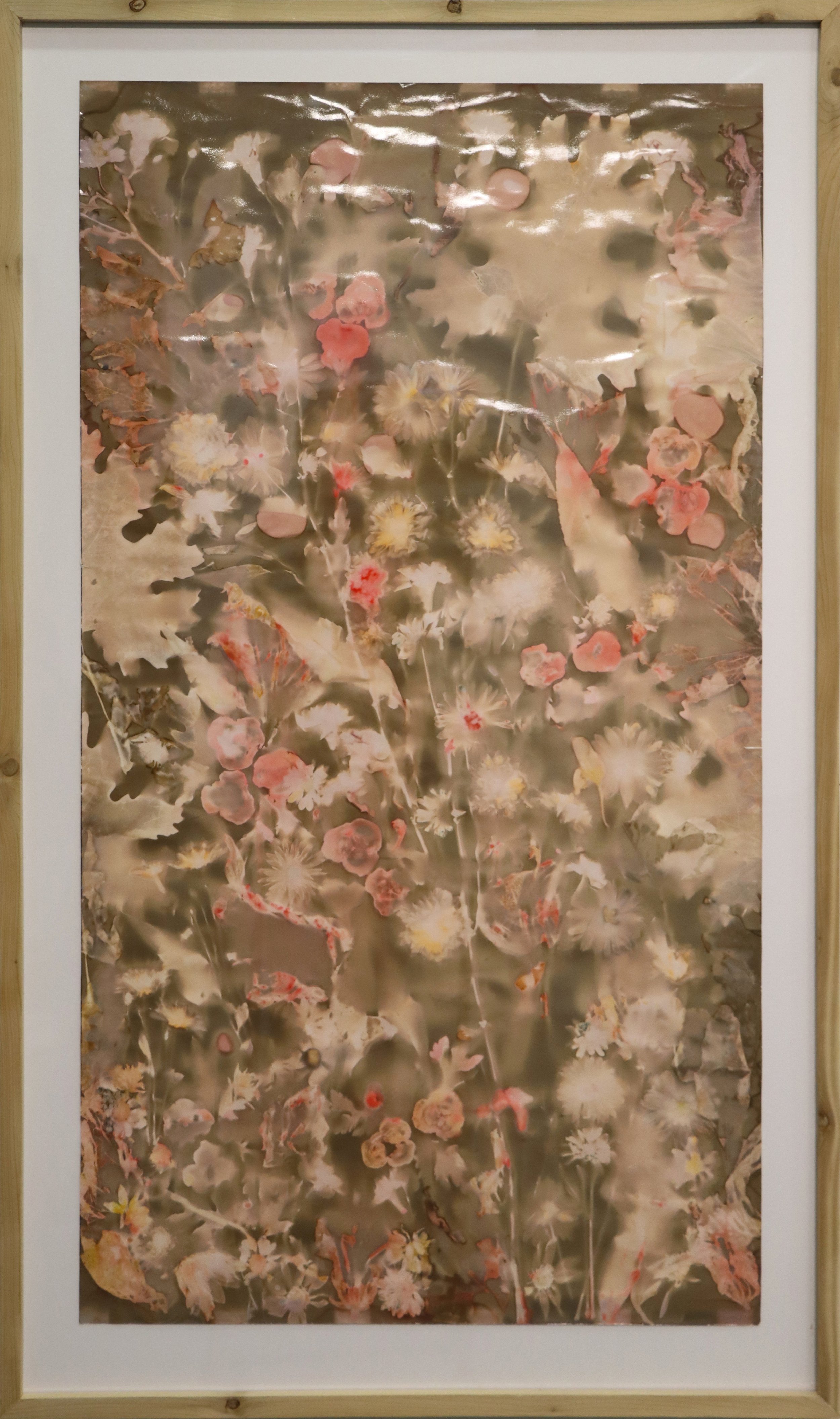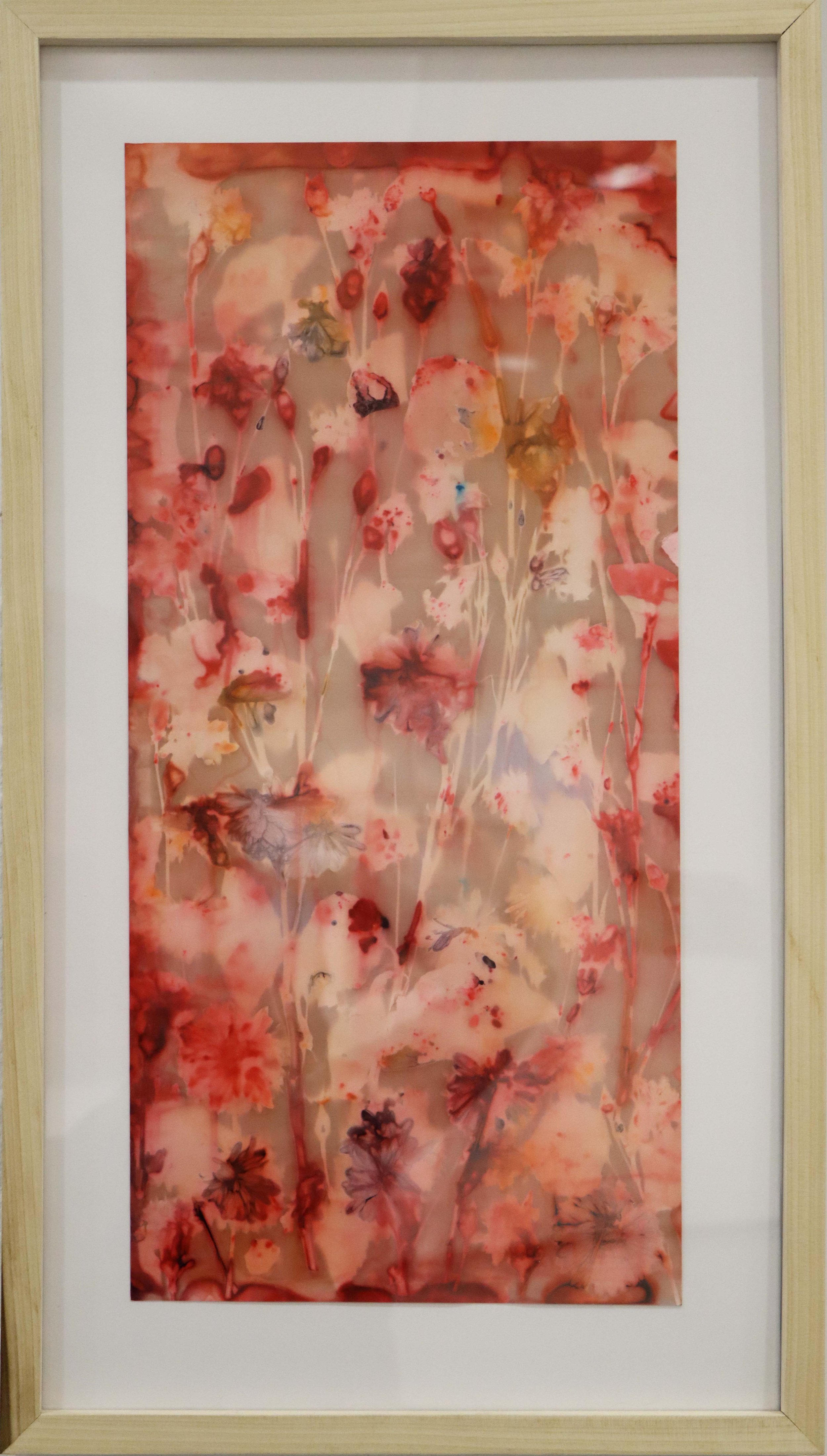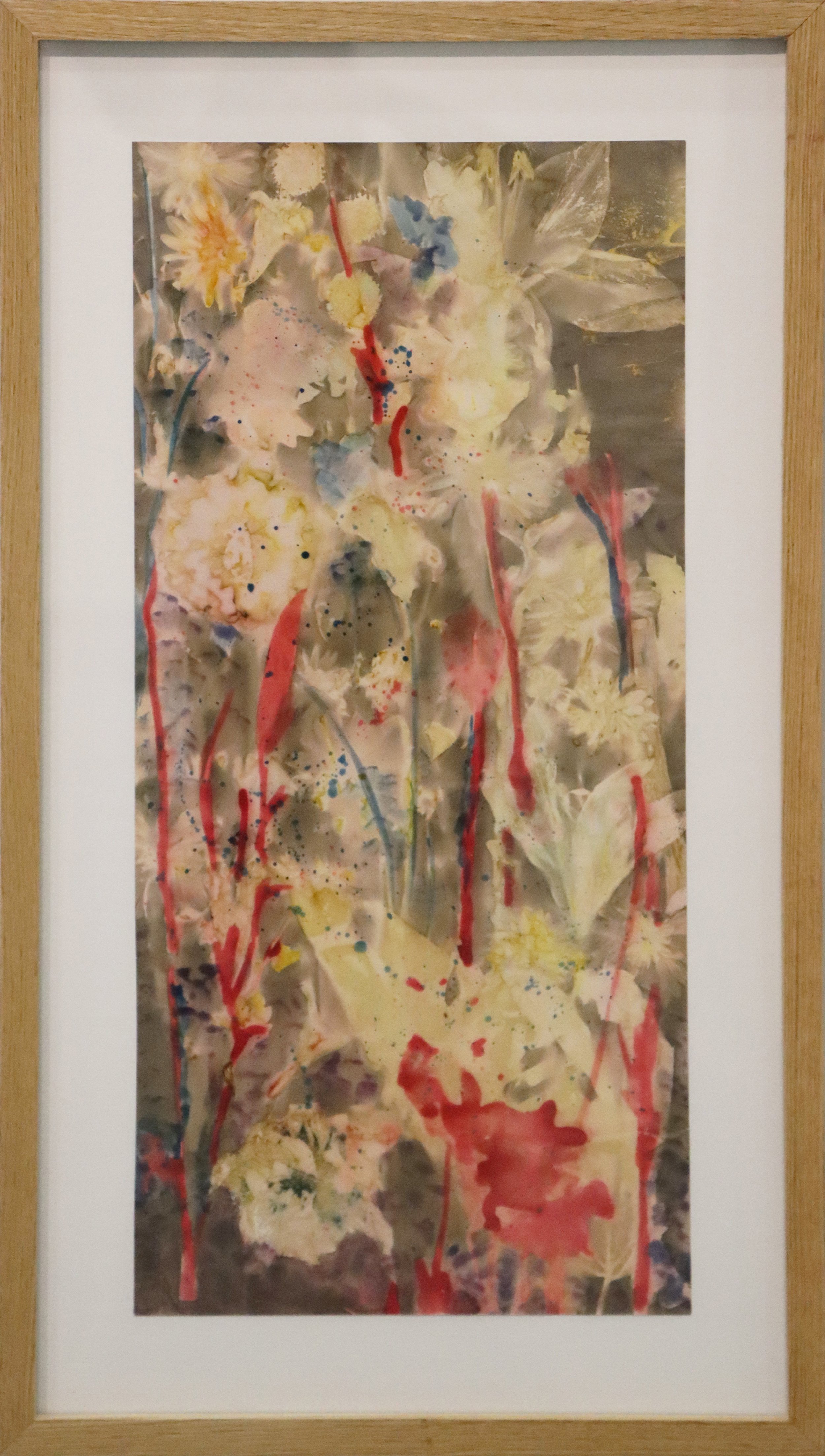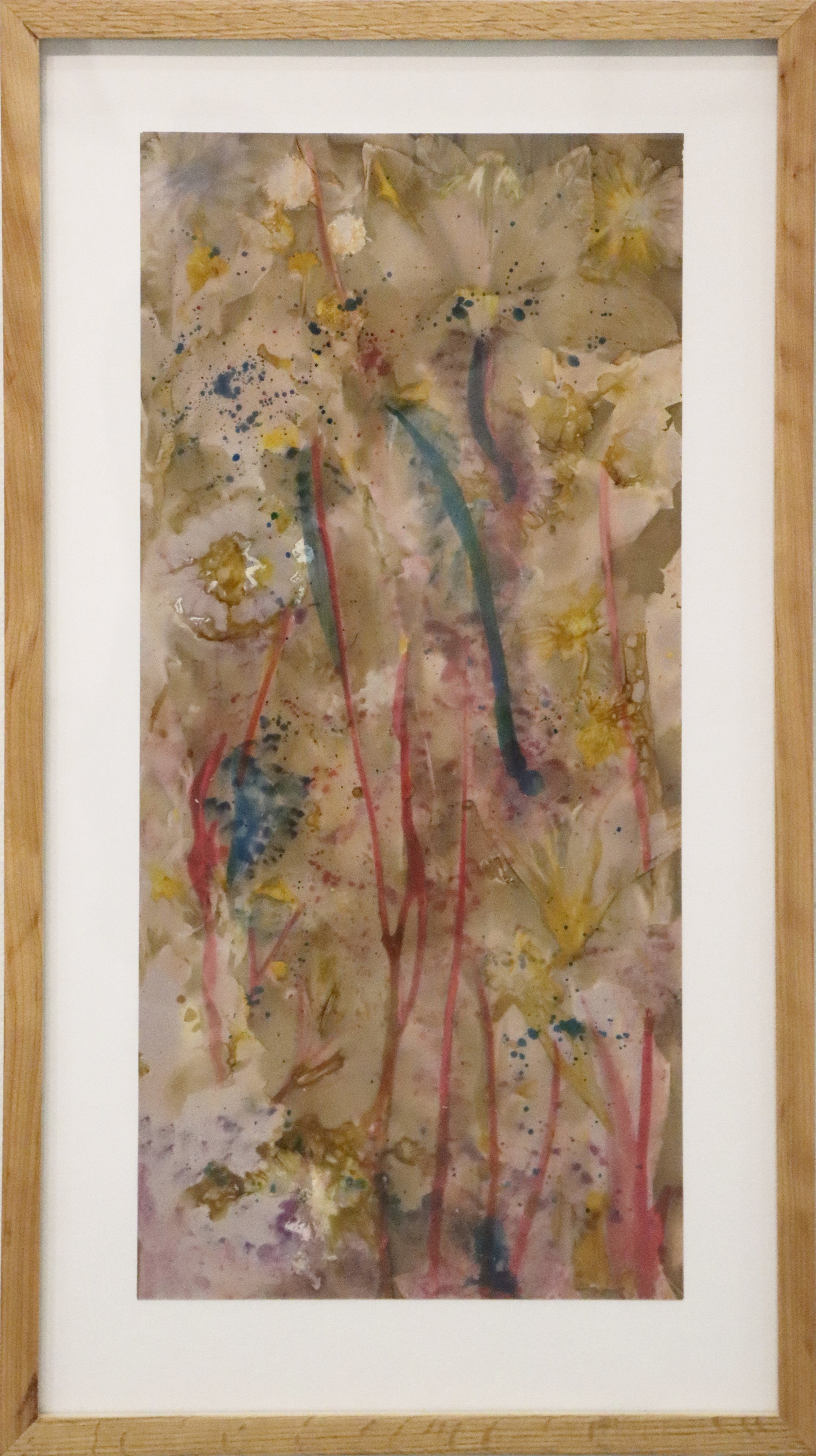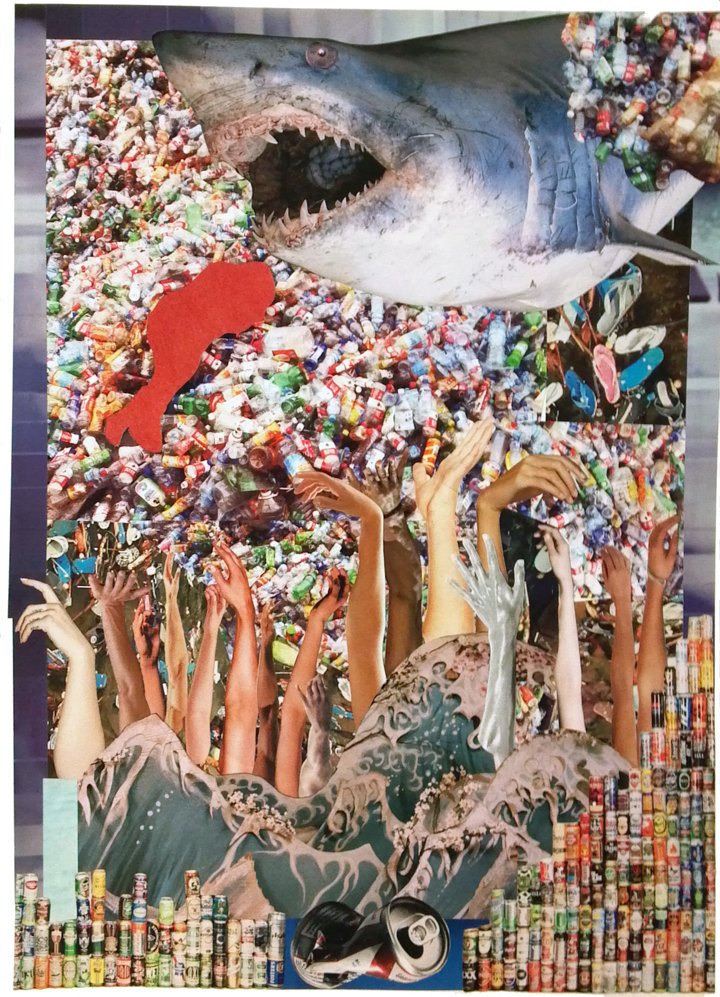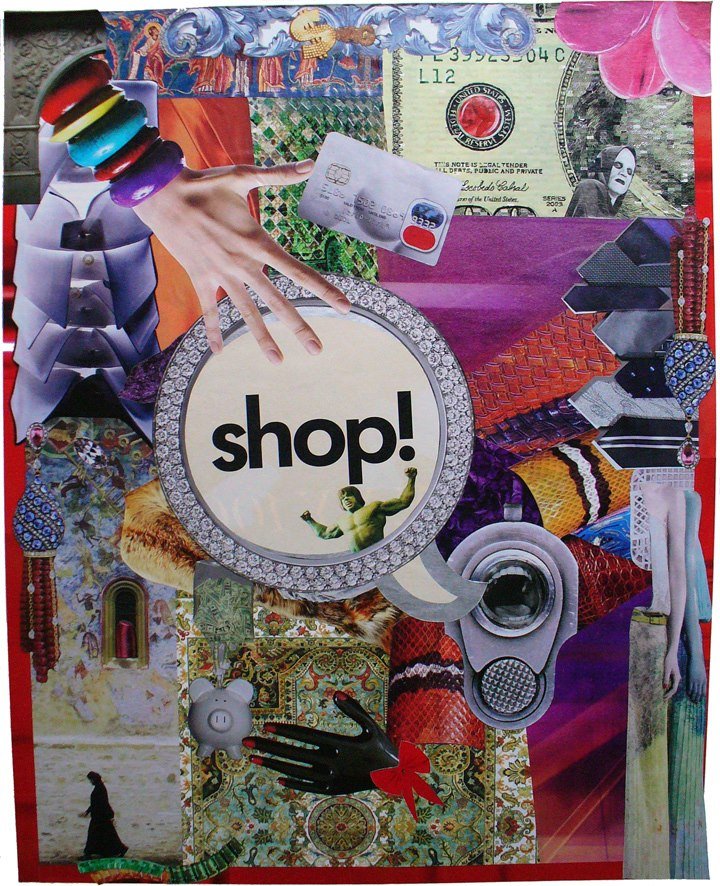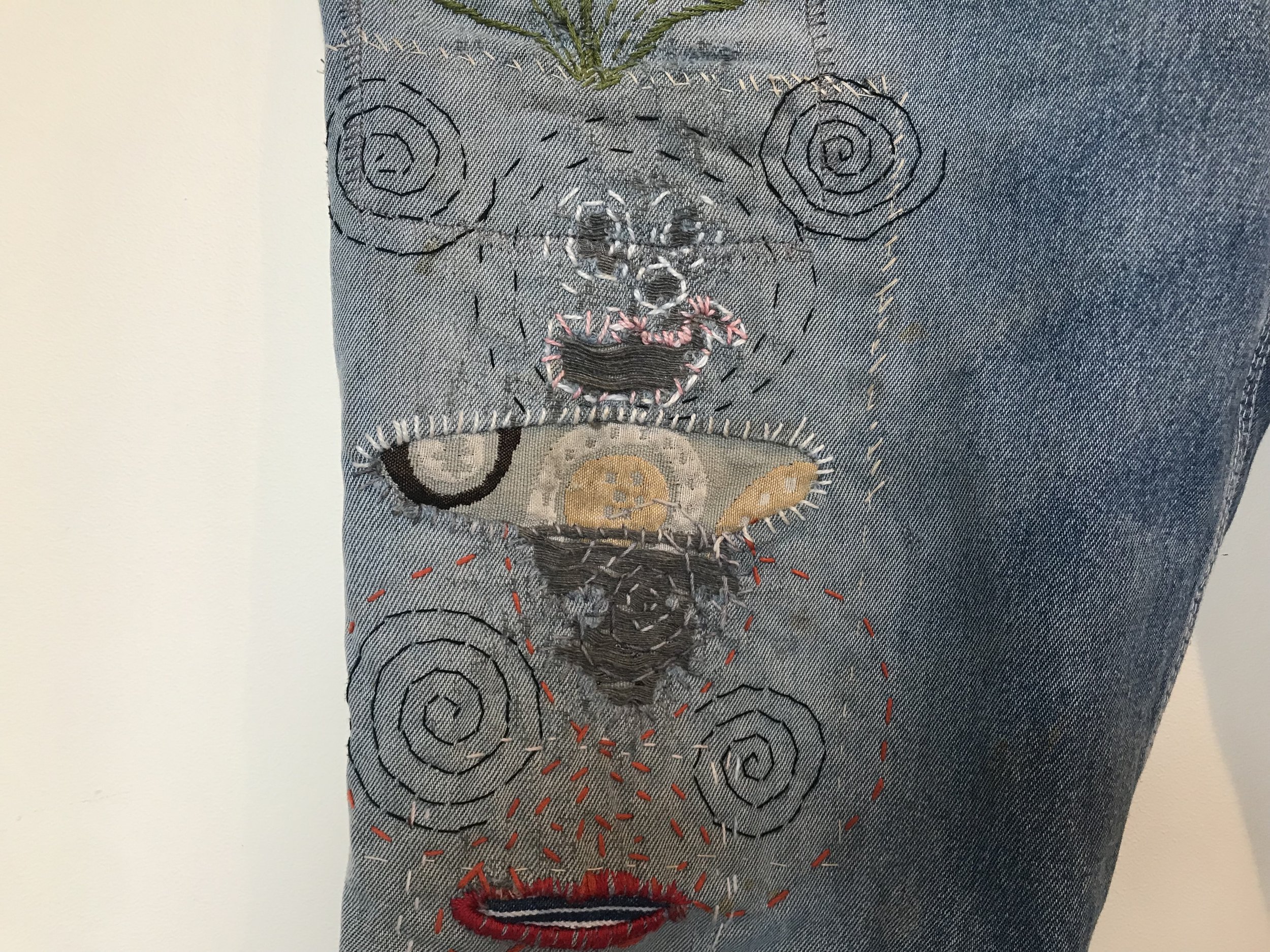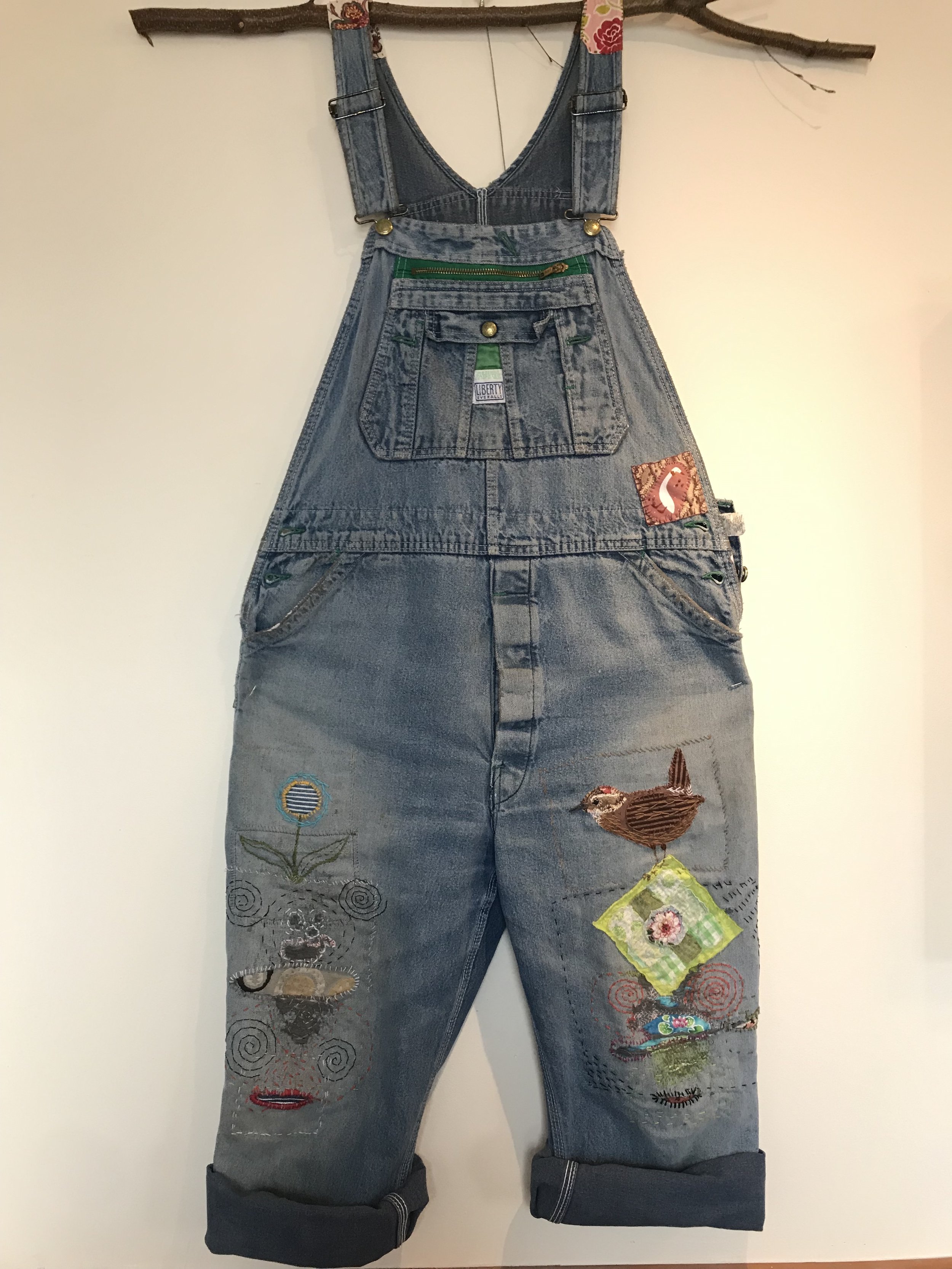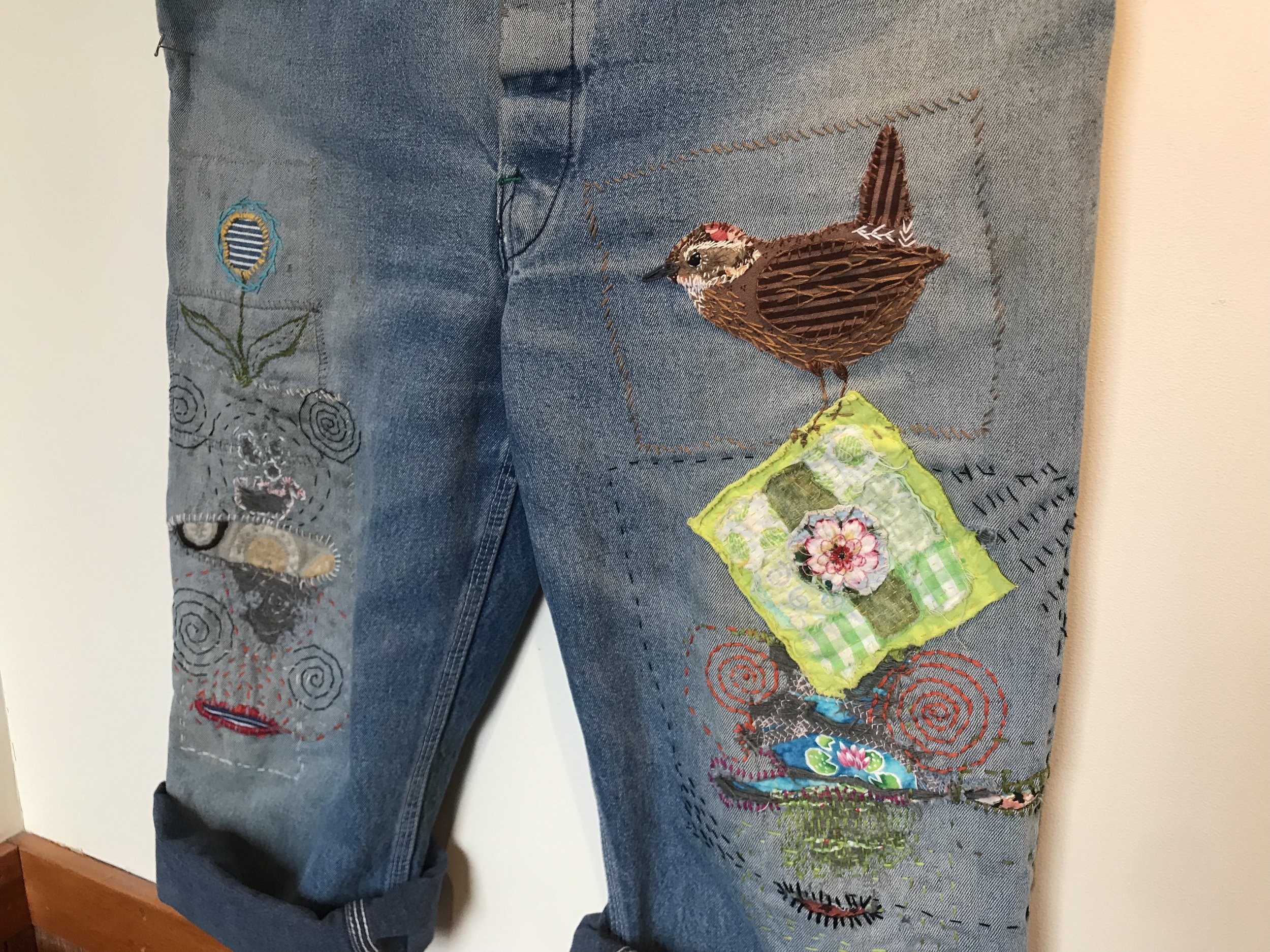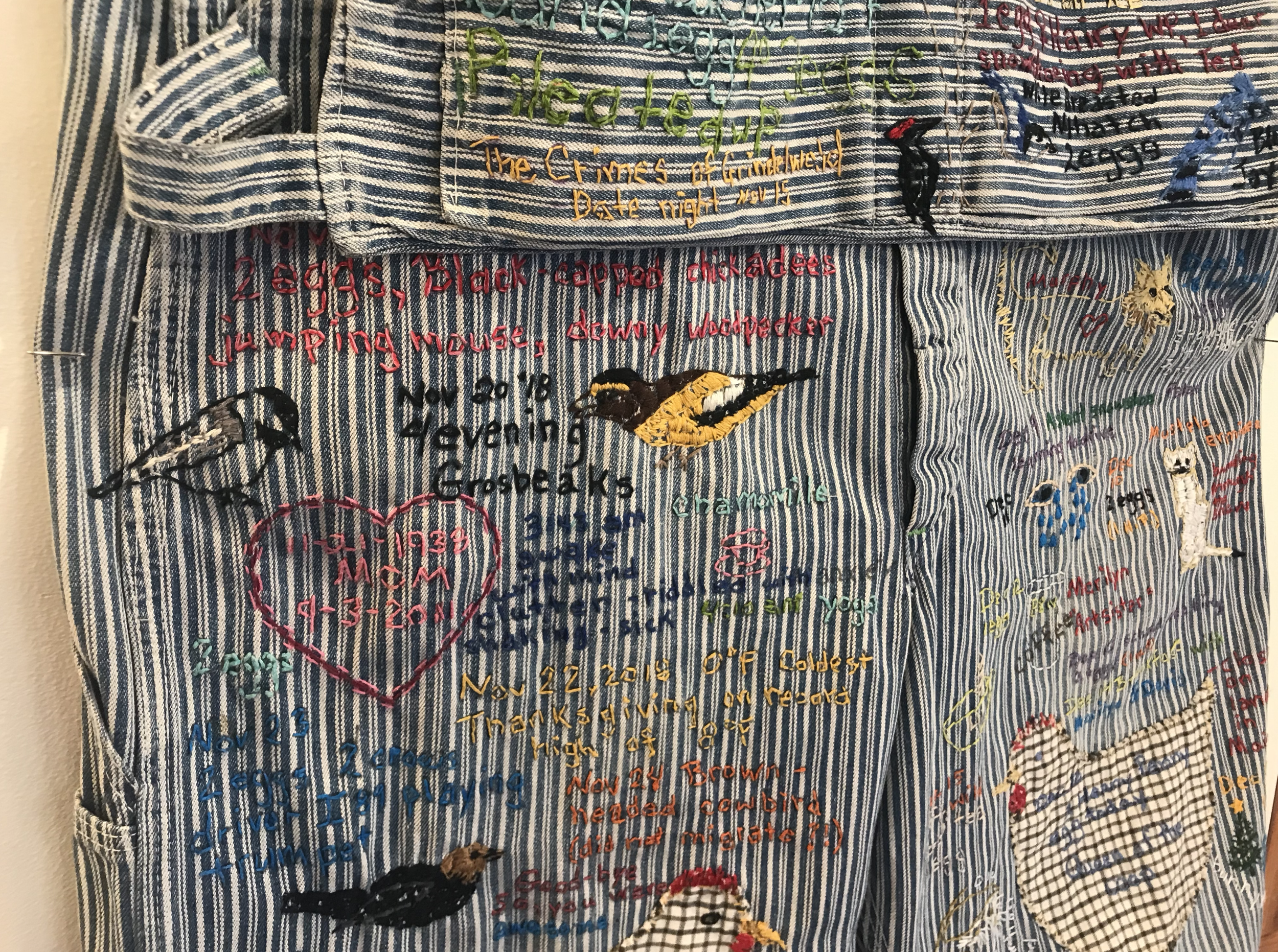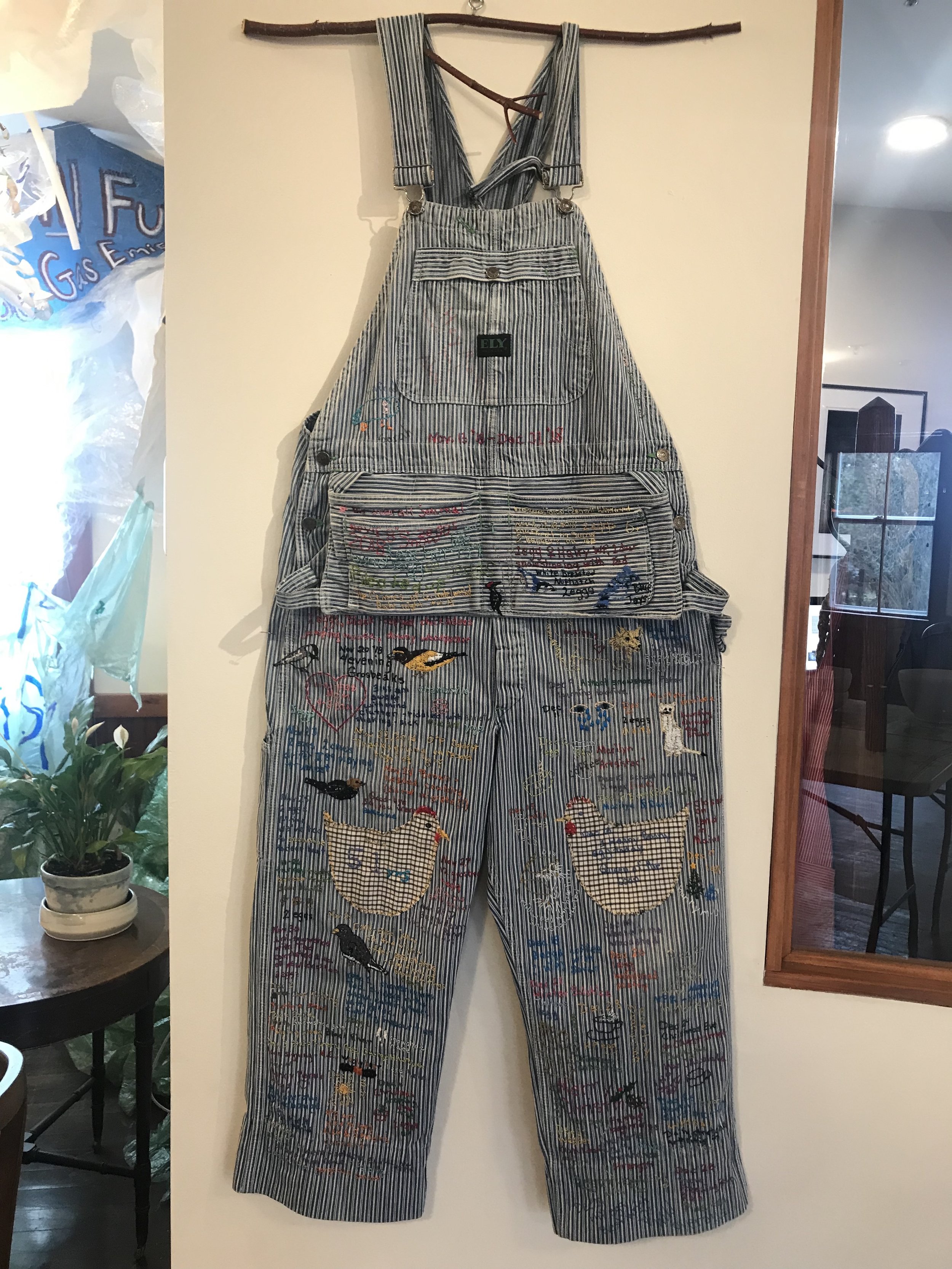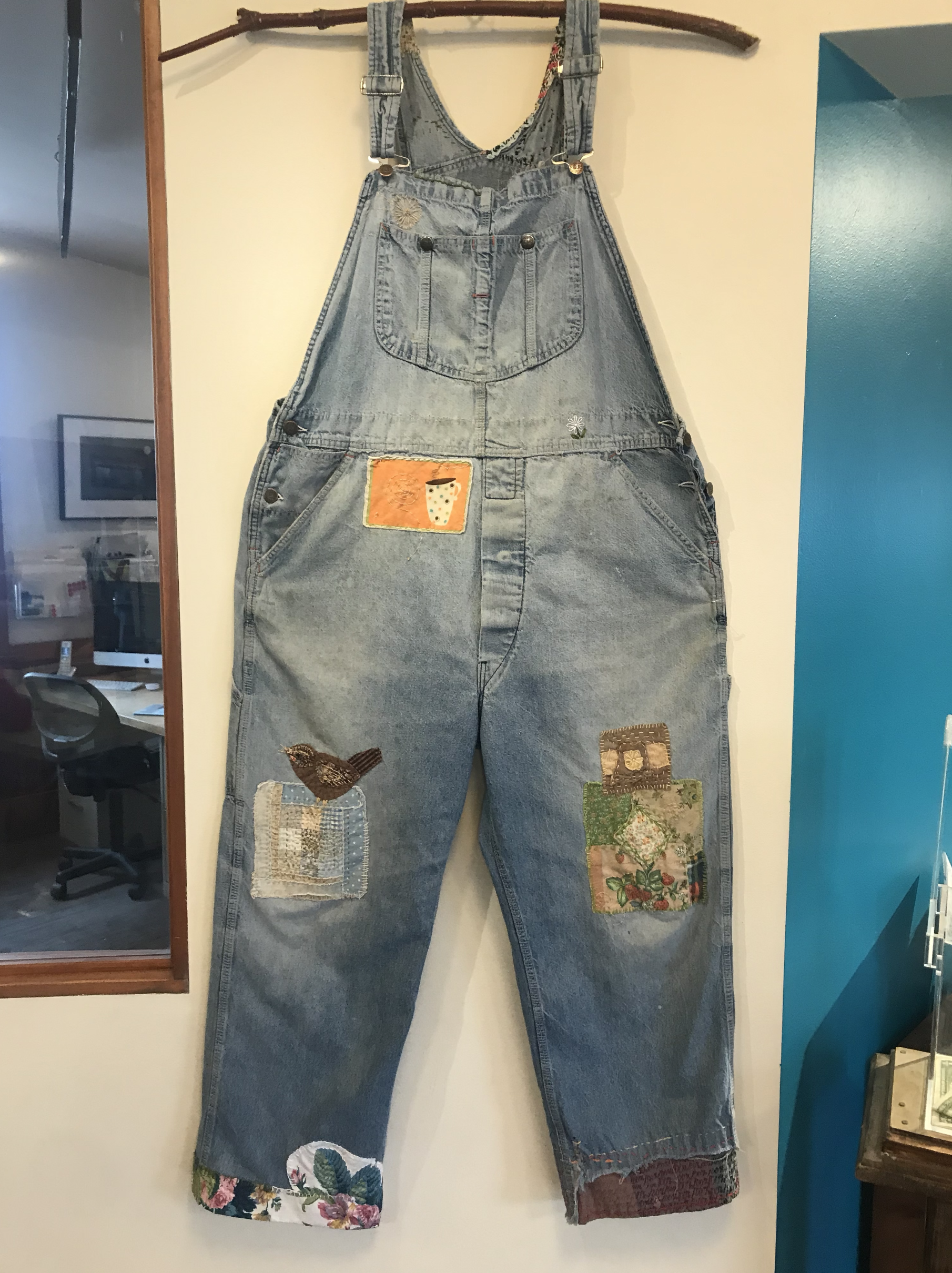Art in a Time Of Crisis
A Group Environmental Art Exhibition
Rebecca Schwarz, Caroline Loftus,
Kate Arslambakova, and Martha Dunbar
Plastic Plankton, Rebecca Schwarz, Post-consumer Plastics and Light
Copley Studio Gallery
April 21st - July 9th, 2022
Drought, fire, hurricanes, and floods.
65 varieties of North American plants were declared extinct in 2020.
Microplastics have now been found in our bloodstream.
Every day we read about the environmental impacts of human industry and development. Extreme weather events once considered rare are now increasingly common.
As we think about this overwhelming climate dilemma that is shaping the next generation of Vermonters, we asked how does the changing climate affect artists and their practices?
Art in a Time of Crisis offers an artistic lens to view some of these problems we face as a community, a state, a species. This group exhibition also offers some solutions and alternatives to begin reshaping our priorities.
These works aim to inspire a call to action. To inspire us to work communally to solve these pressing issues. The only way forward is together.
Exhibition Reception and Artist Talk
Thursday, May 12th
5:30 to 7:30pm
Works by Rebecca Schwarz
Rebecca Schwarz (she/her) is a community-engaged artist working to foster creativity in all ages and abilities. Goals of increasing health on many scales from the personal, to community, to environmental levels, and patterns in nature inspire my work in a range of modes: sculpture, collaborations, and communication. She is an organizing member of EcoCultureLab, and teaches communications and creative media students at Champlain College. She works to connect volunteers, patients, families and caregivers with the arts in the hospital coordinating Art from the Heart, a program of Burlington City Arts and UVM Medical Center.
Working with trash grew out of my fascination and concern with our relationships to our ecologies. Plastics come to us the ‘consumers’ as manufactured elegant sculptural objects - artifacts of our exploitive, and exorbitant consumption of resources. They are slick in many senses (made from oil they resist being glued), designed to be appealing and easy to use, light and flexible, smooth and glossy, ‘disposable’ yet beautiful. My unease about where plastics are originating from, ending up, and what effects are rippling out along the way led me to make a ‘clear’ sculpture that aims to reflect and illuminate these stories to mesmerize us into action that precludes consumption.
My investigations developed into sculptural metaphors that are at once both hopeful and grim, ironic and sincere, a celebration of beauty and a fear of our ecstatic consumption.
Works by Caroline Loftus
Caroline Loftus (she/her) is currently an MFA candidate at the Northern Vermont University, Johnson.
The sun is my enlarger, and plants are my muse. My creative process heavily involves gathering inspiration from my surrounding natural environment. Silver gelatin photographic paper is my canvas on which objects are placed, and an unrepeatable image is exposed under the sun.
Working in a camera-less photographic process brings a lot of unknowns. With lumens, what normally is controlled through aperture, exposure, and chemistry, is unpredictable. The process of creating each lumen is meditative. I focus on my hands; how they feel, what they look like, the way they move. What I feel and think determines my creative freedom. I am not my body, and neither are you.
Every day I challenge myself to think innovatively about the work I create. I push through the boundaries of photographic paper by using anything containing pigment; from Hawaiian Punch to Chaga, and most recently, RIT Dye. The addition of these pigments permanently stains the photographic paper, preserving the colors that were once lost to the chemistry that makes it light safe. Focusing on the process instead of the outcome of my work is liberating. I am grateful for each quiet moment that I am allowed a deeper breath, where time slows, and I connect with myself on a level far greater than physical. In each of these moments, I spend time observing my natural surroundings, picking plants most would discard or leave unnoticed.
I want to thank the earth through my work; creating an image manipulated by nature.
Works by Ekaterina Arslambakova
Ekaterina (Kate) Arslambakova (she/her) is a Russian-American painter. Working primarily with oils, collage on paper, and mixed media, her current abstract work responds directly to surrounding environments and seeks to find balance between shapes and colors, calm and unrest, while she also attempts to do so in her everyday life.
Kate was raised in Siberia, Russia and relocated to the States over 20 years ago. She received her BFA in painting and MA in Arts Administration from Florida State University. Since 2008, Arslambakova has participated in numerous group exhibitions, including a solo exhibition at Renditions: An Art Space (2011). Her works can be seen in venues throughout Vermont.
Works by Martha Dunbar
Martha Dunbar (she/her) is a Slow stitch, meditative stitch artist. She primarily uses bib overalls as her canvas to create wearable art pieces. She embraces the ecological bonus of making loved clothes last by visible mending. Her decoratively stitched bib overalls are a revolt against the fast fashion industry’s assault on the planet.
I’ve found slow stitching to be a fabulous way to combat the anxieties associated with the fast pace of modern-day life. It’s a way to find balance. As a retired biologist, I use slow stitching to keep an embroidered nature journal on my overalls as well.


